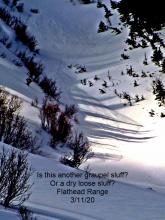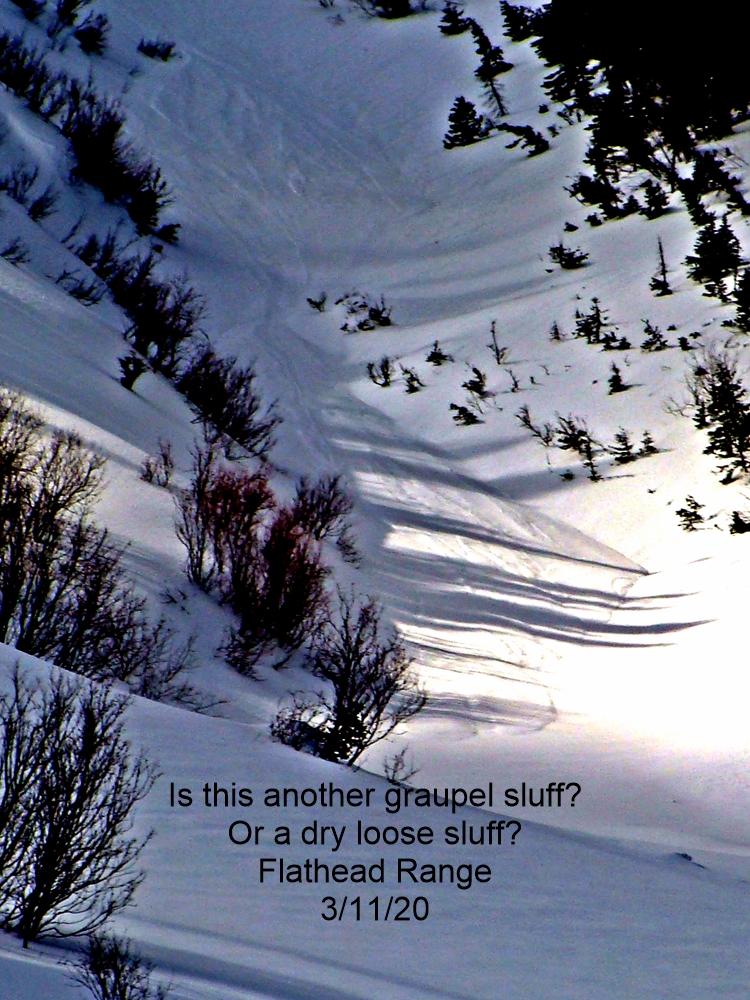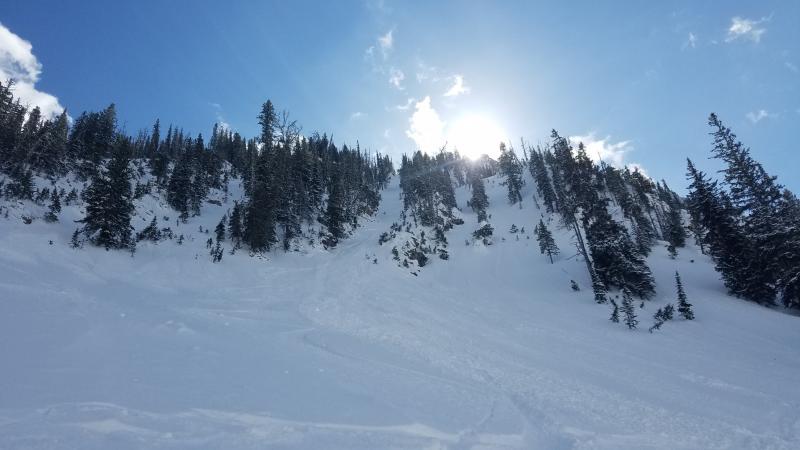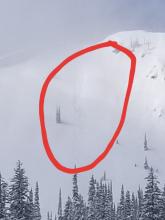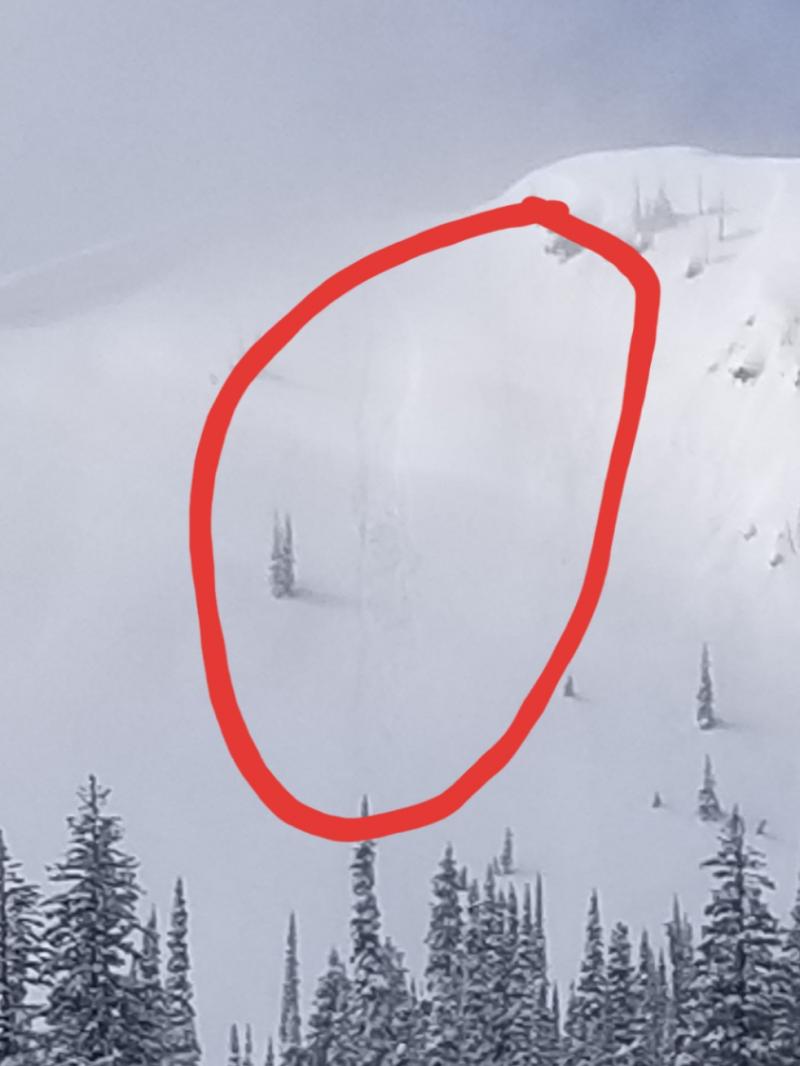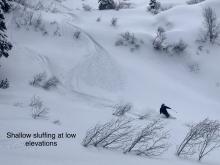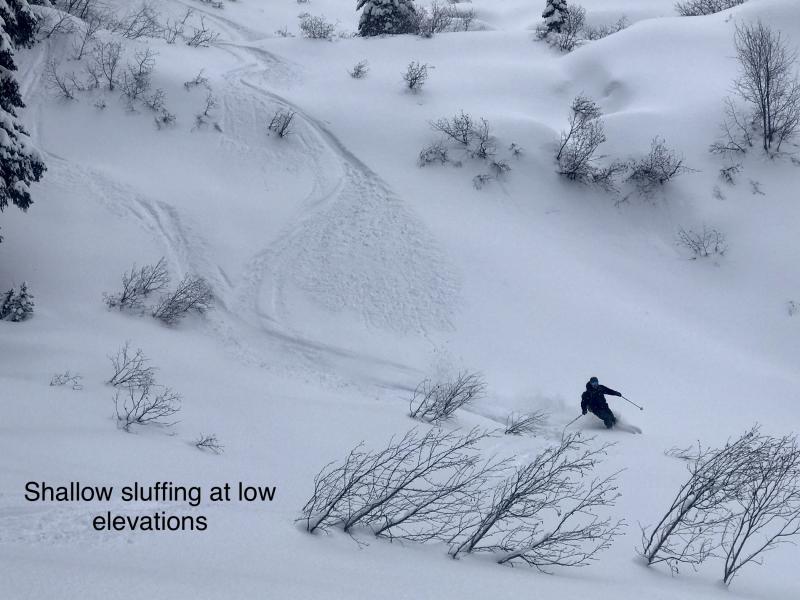| Friday | Friday Night | Saturday | |
|---|---|---|---|
| Cloud Cover: | Clear and sunny above ~4000 feet. Warming temperatures. | Clear. | Sunny. Warming mountain temperatures. |
| Temperatures: | 18 to 31 deg. F. | -5 to 10 deg. F. | 22 to 34 deg. F. |
| Wind Direction: | Southwest | Southeast | Southwest |
| Wind Speed: | 3-10 mph. | 1-5 mph. | 2-5 mph. |
| Snowfall: | 0 in. | 0 in. | 0 in. |
| Snow Line: |
Whitefish Range
Swan Range
Flathead Range and Glacier National Park
How to read the forecast
Happy New Year! The danger above 5000 feet is MODERATE and human triggered avalanches are possible. Recent wind loading, warming, and ample sunshine will cause stability to change. Wind slabs, soft slabs, and natural, sun initiated sluffs will be possible today. Treat recently wind loaded terrain as suspect and carefully evaluate the snowpack and terrain before committing to any slope. Pay attention to the effects of warming (potentially above freezing) on the snowpack. Below 5000 feet the danger is LOW.

2. Moderate
?
Above 6500 ft.
2. Moderate
?
5000-6500 ft.
1. Low
?
3500-5000 ft.
- 1. Low
- 2. Moderate
- 3. Considerable
- 4. High
- 5. Extreme
-
Type ?
-
Aspect/Elevation ?
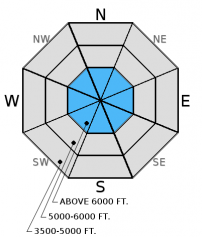
-
Likelihood ?CertainVery LikelyLikelyPossible
 Unlikely
Unlikely -
Size ?HistoricVery LargeLargeSmall

Yesterday, fresh soft wind slabs formed on northeast through southeast aspects. It is also still possible to trigger lingering, stiff wind slabs on other aspects in steep, exposed terrain. You are most likely to find this problem near ridgelines and cross-loaded gullies. The wind yesterday was moderate with strong gusts, and there is plenty of low density snow to redistribute and form fresh slabs. Older, harder wind slabs will sound hollow or "drummy" and typically sit on less dense snow. Softer wind slabs will look more smooth, pillowy, and rounded. With high pressure entering the region, blue skies and ample sunshine in the alpine will be inviting. Even a small wind slab in high consequence terrain can ruin the New Year.
-
Type ?
-
Aspect/Elevation ?

-
Likelihood ?CertainVery LikelyLikelyPossible
 Unlikely
Unlikely -
Size ?HistoricVery LargeLargeSmall

Natural loose sluffs up to size D1.5 occurred yesterday on steep faces receiving plenty of sunshine. This is the first period of sunshine with warming to near (and potentially above) freezing in a while and the light, loose snow will begin to sluff on steep slopes today. Human triggered and natural sluffs are possible to likely. Because it is a surface problem, it is easy to feel and recognize unconsolidated snow. On large slopes, they can entrain a substantial amount of snow and travel very fast. They are most dangerous when combined with terrain traps such as rocks, trees, cliffs, or a gulley. Avoid traveling under steep slopes during intense sunshine today.
Changing Conditions and Changing Mindset: This last storm delivered low density snow that made for deep, excellent riding and skiing with pretty stable conditions. However, warming temps creeping near and above the freezing mark combined with ample sunshine today and tomorrow will create a more cohesive surface slab. This slab could become more susceptible to triggering. We currently don't have any major weak layers within the top part of the snowpack, but we could begin to see slab development on density changes in the upper part of the snowpack. Pay attention to changing conditions today and how the snow feels under your skis or sled. If it feels like the surface snow is becoming more "slabby" then reassess terrain choices.
There are currently two deeper layers in the snowpack that still pose concern, particularly in areas with a shallow snowpack. We haven't observed or received reports of avalanches on these layers (even during or after last week's storms) or reactiveness in stability tests, but they are easily identifiable and worthy of investigation in your snowpit due to their variablity.
1. In some locations throughout the advisory area we noted and have received observations of weak, sugary snow (facets) near the ground. This layer has not been reactive in stability tests in over three weeks, but in shallow areas (snowpack less than 3-4 feet deep) this layer may be more developed and could be more reactive. It is best to avoid areas of shallow snowpack where this layer exists (like steep, rocky slopes).
2. The December 9 rain crust still lurks throughout most of the advisory area. A layer of softer facets (weak, sugary snow) below the crust has shown no signs of instability (fracture or propagation) in our snowpits for two weeks, but it's still there. It is unlikely you'll trigger an avalanche on this layer, but not impossible. It is still worth taking the time to dig into the snow and see how it is reacting in the areas that you are skiing or riding.
Yesterday, my partner and I traveled to the Essex Creek and Marion Lake drainages in the Middle Fork of the Flathead Range (observation). We observed active wind transport near ridgelines (photo) and natural loose sluffs (photo) on steep slopes.
Mark toured with BNSF avalanche safety yesterday in southern Glacier NP and observed wind transport with shallow wind slabs developing. He also reported shooting cracks within the new wind slab (photo and observation).
Skiers just south of Marias Pass also reported sensitive wind slabs (observation). Skiers in the Apgar Range yesterday also observed wind loading near ridgetops (observation), but no other obvious signs of instability.
This past week, two skiing parties (observation 1, observation 2) in the northern Apgar Range reported good skiing with minimal slab formation. One party, in their stability test, was able to initiate fracture with hard force on a layer about 2 feet from the surface (suspected wind slab near the ridge) that propagated across the column. Though, they could not repeat this result on subsequent tests. Another party Wednesday on Sub-Shields in southern Glacier Park reported a thin snowpack in their pit with weak snow near the ground and wind slabs on easterly aspects (observation).
Thanks to everyone for submitting observations. They are extremely useful for everyone.
Visit our Observations page and our You Tube channel for more observations from the entire season.
Please let us know what you are seeing out there. Your observations are important and valued.
HOW TO SUBMIT OBSERVATIONS:
Email: [email protected]
Call and leave a message: 406.387.3821
You can also submit quick observations via text: 406.241.4571 (FAC mobile)
OR
Submit Snowpack Observations: http://www.flatheadavalanche.org/node/add/snowobs
Submit Avalanche Observations: http://www.flatheadavalanche.org/node/add/avyobs
Wind speeds increased yesterday to 5-15 mph up to 25 mph near the Continental Divide. Currently, temperatures above 6000 feet are rather chilly and range from -4º to 9º F and winds are out of the southwest at most locations at 5-10 mph and out of the southeast near the Continental Divide with gusts up to 20 mph. Today, an inversion exists and skies will be clear in the mountains with a stratus cloud deck around 4000 feet and chilly valley temperatures (mid- to upper teens F). Temperatures in the mountains will warm to the upper 20s to low 30s F. Winds should be out of the southwest at 5-15 mph with gusts to 25 mph near the Continental Divide again.
| 0600 temperature: | -4 to 9 deg. F. |
| Max. temperature in the last 24 hours: | 8 to 22 deg. F. |
| Average wind direction during the last 24 hours: | Southwest |
| Average wind speed during the last 24 hours: | 5-13 mph |
| Maximum wind gust in the last 24 hours: | 6-25 mph |
| New snowfall in the last 24 hours: | 0 inches |
| Total snow depth: | 49-63 inches |
This advisory applies only to backcountry areas outside established ski area boundaries. This advisory describes general avalanche conditions and local variations always occur. This advisory expires at midnight on the posted day unless otherwise noted. The information in this advisory is provided by the USDA Forest Service who is solely responsible for its content.














